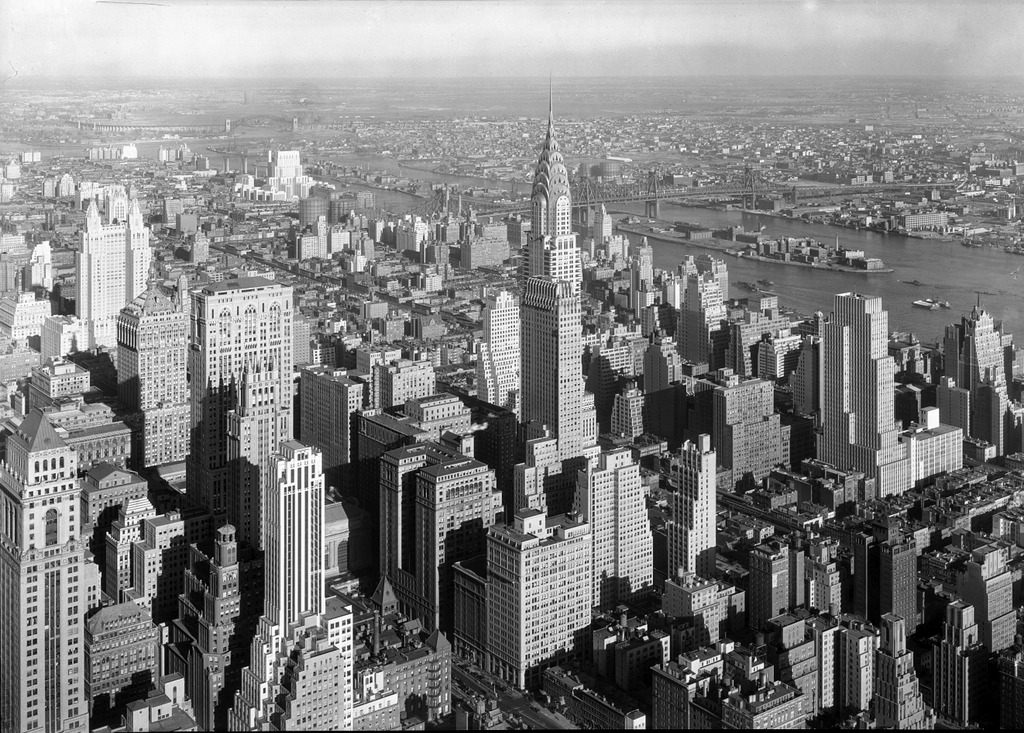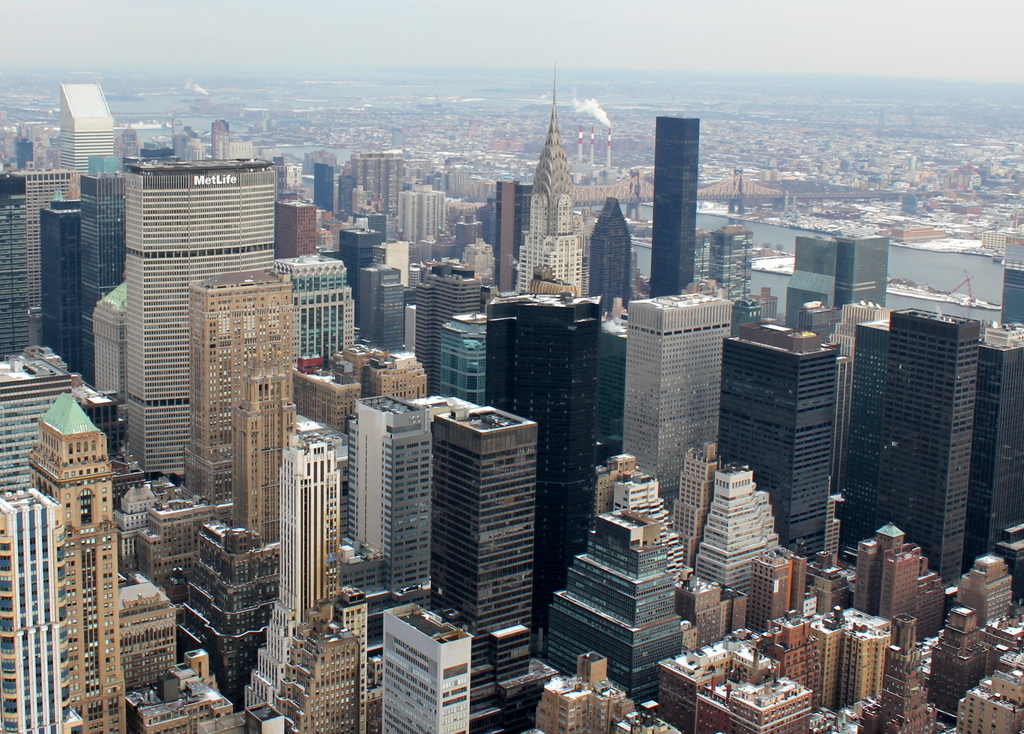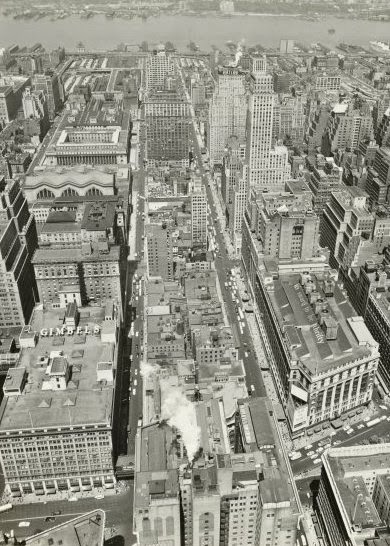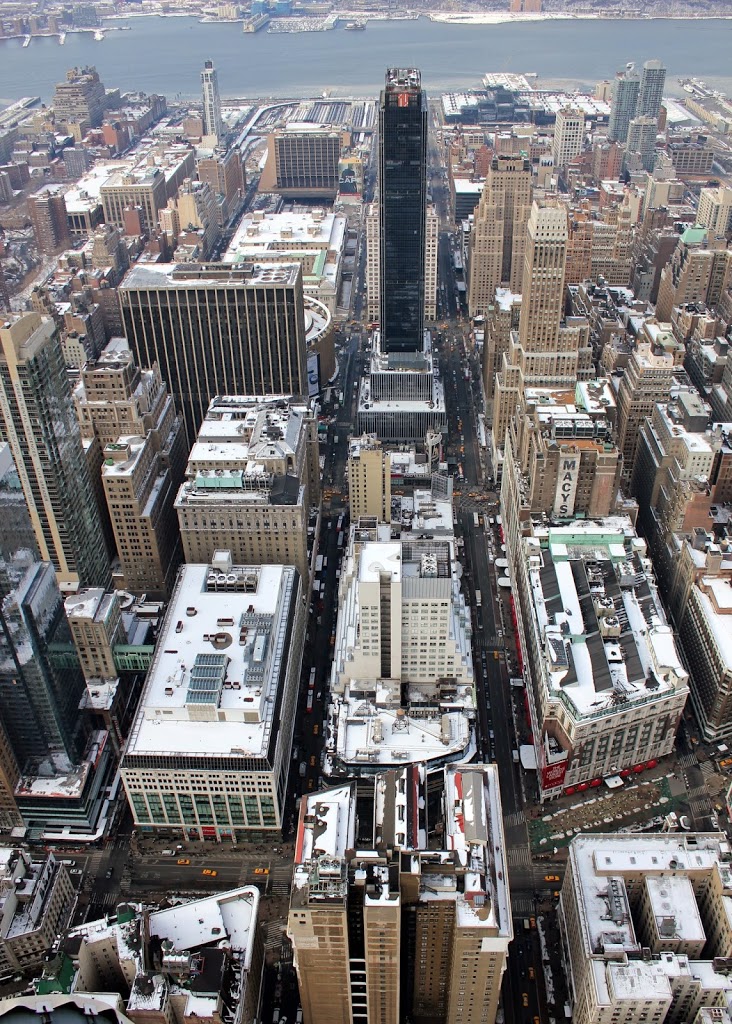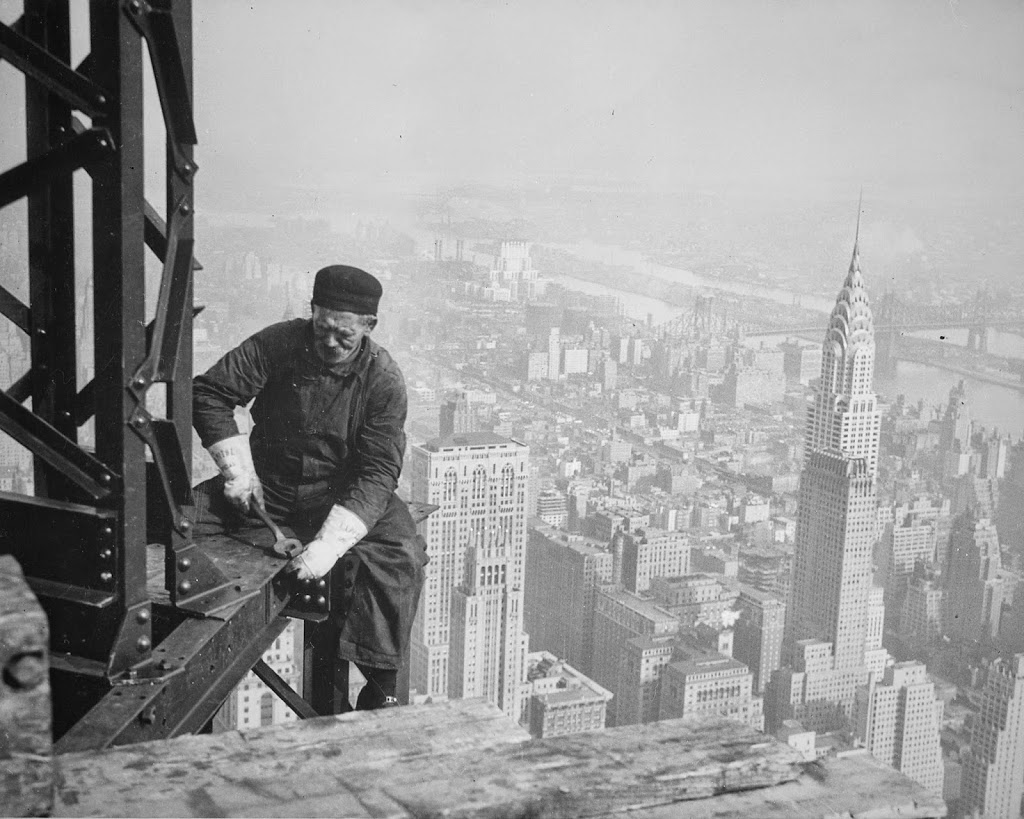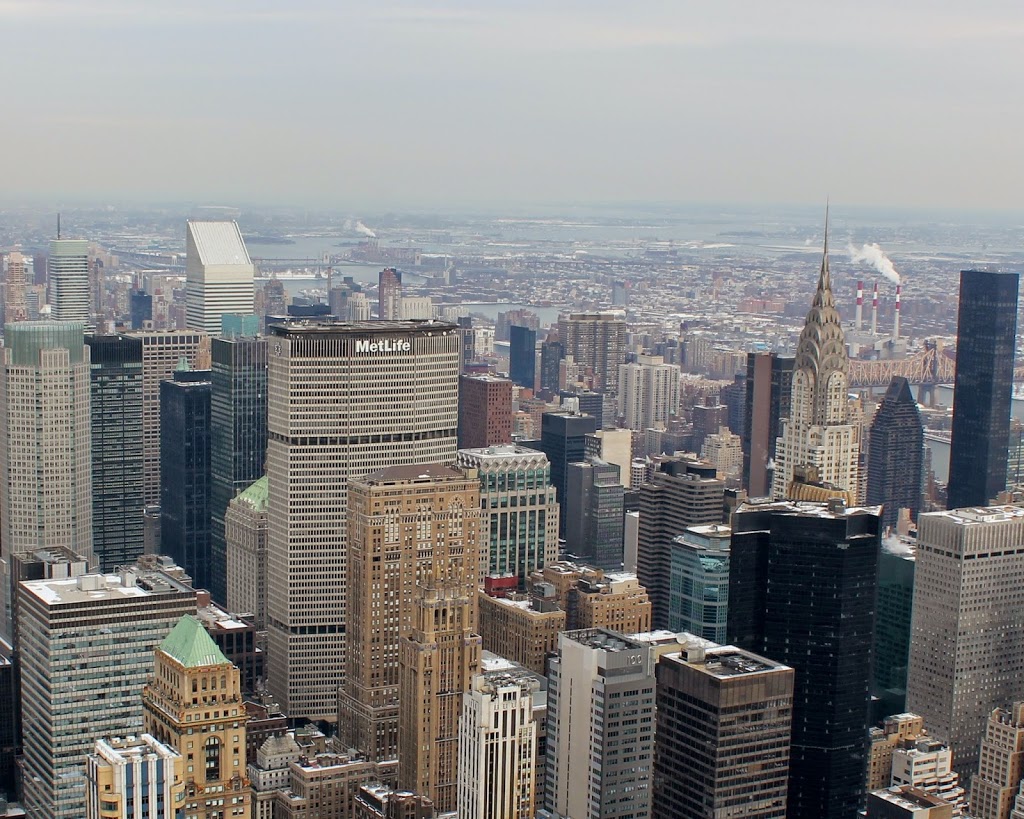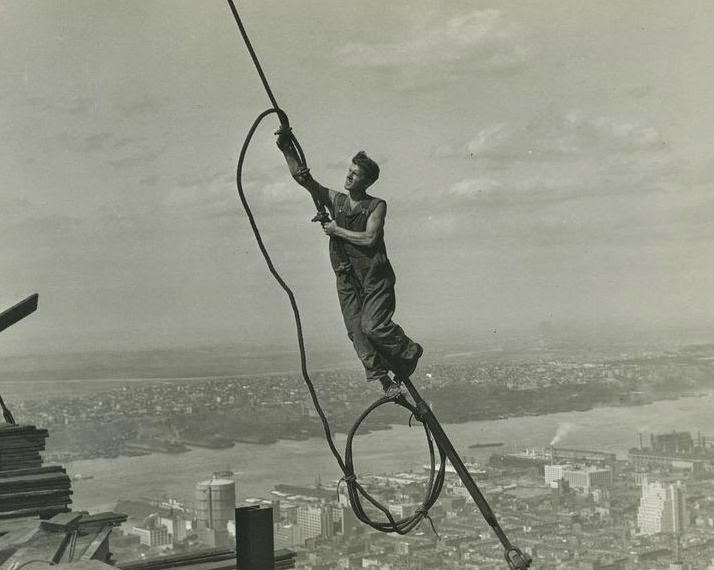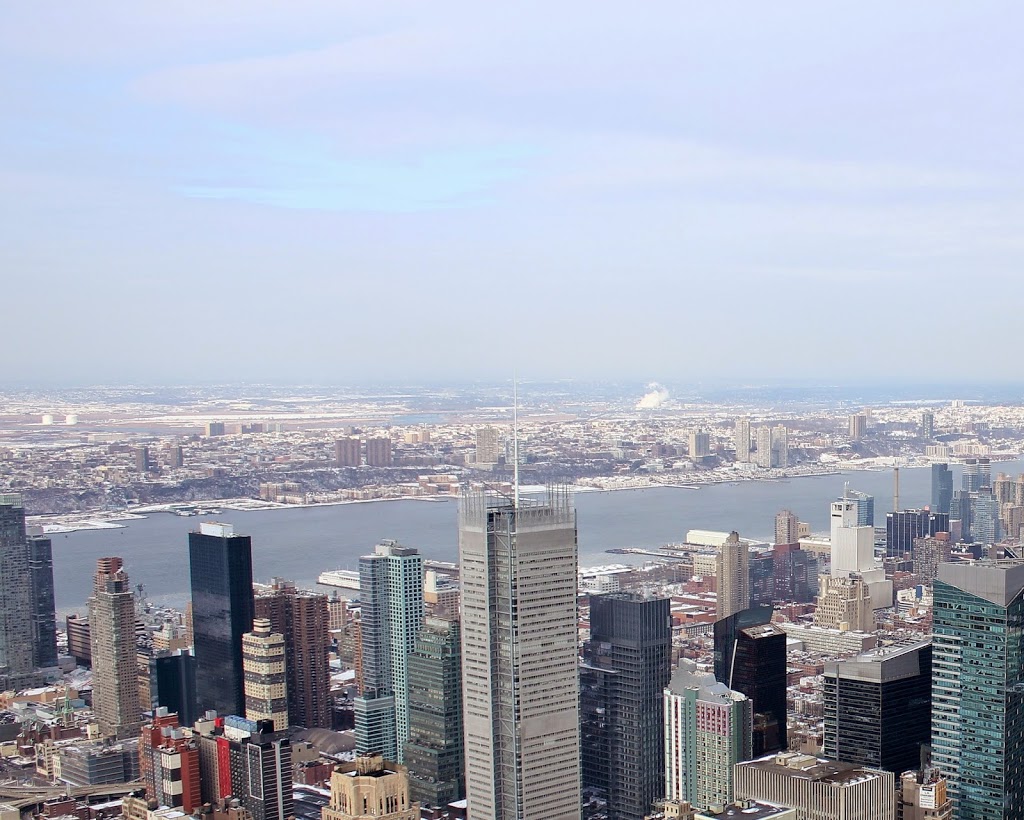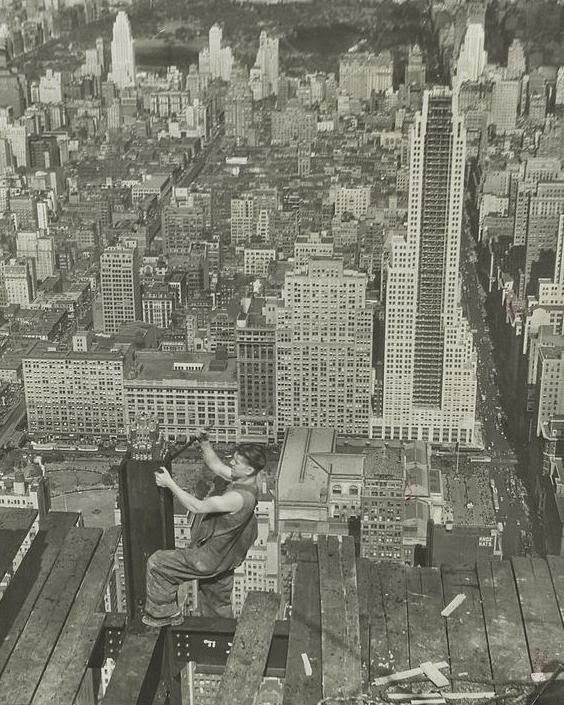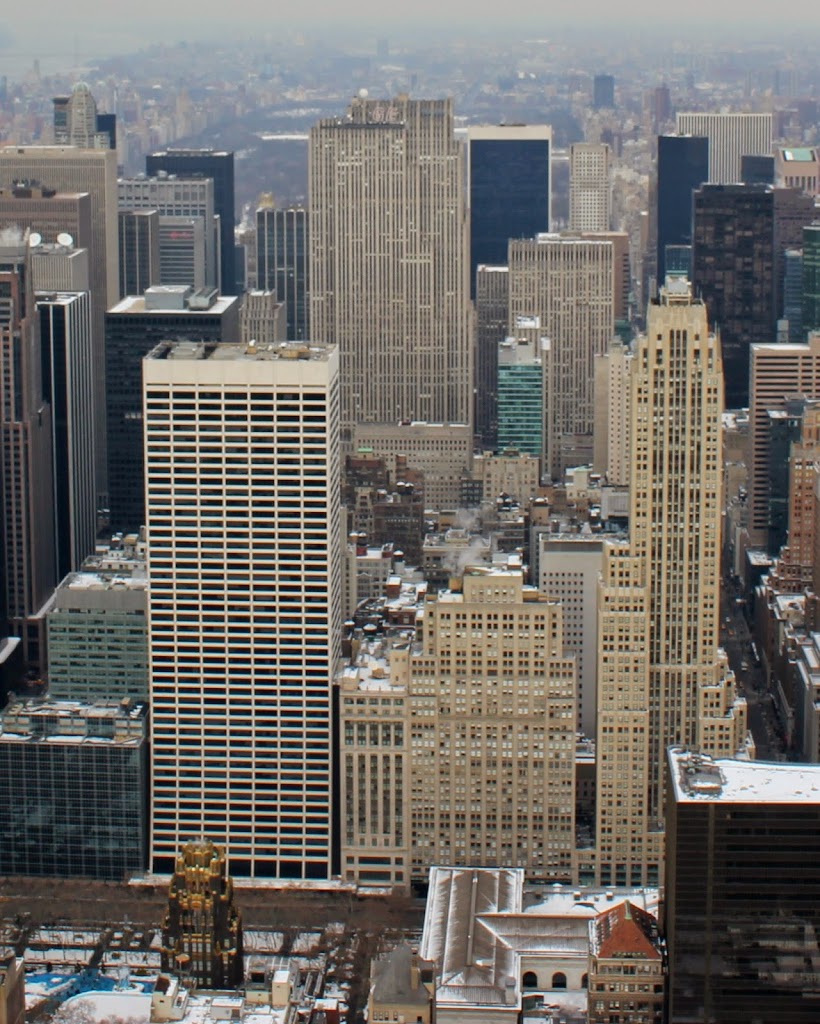The view of the upper east side of Manhattan from the top of the Empire State Building in 1932. Image courtesy of the Library of Congress, Gottscho-Schleisner Collection.
The same view in 2011:
Quite a lot has changed in the Manhattan skyline since 1932 – the two photos show the contrast between the early 20th century skyscrapers, which were mandated to have step-like setbacks, and the sleek, box-like modern skyscrapers of 2011. However, many of the old skyscrapers survive today, especially in the foreground. The most prominent in the 1932 picture, the Chrysler Building, is still easily seen from the Empire State Building today, although today it is more its distinctive spire, rather than its height alone, that sets it apart from the rest.

